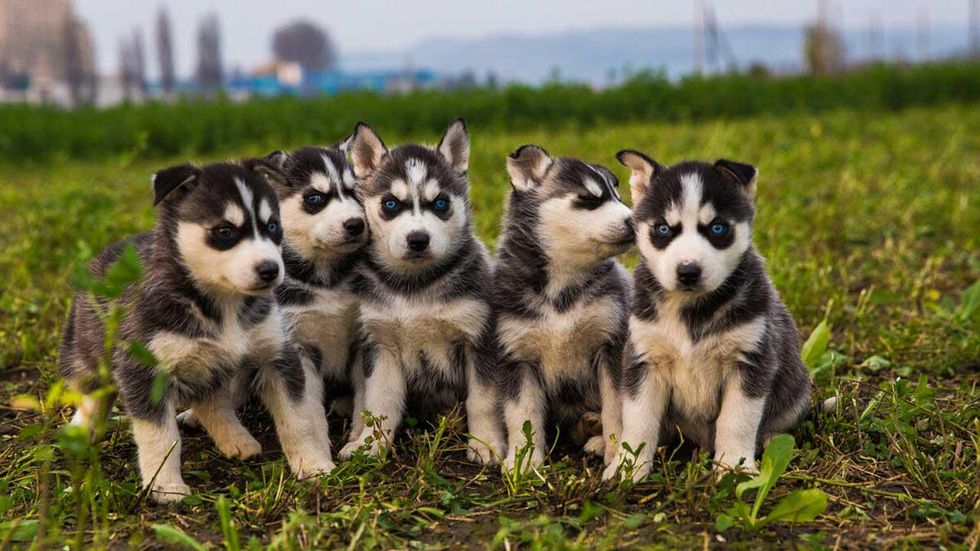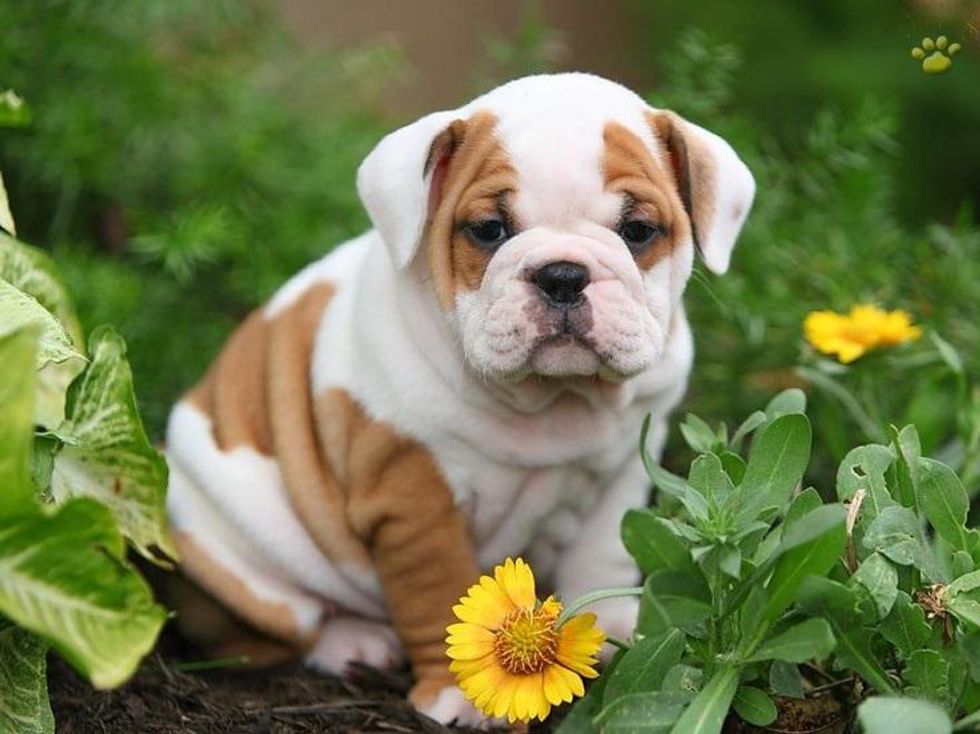One of the most overwhelming aspects of getting a new dog is the training.
Just like being parents to a human child, there isn’t a handbook, guide, or instruction manual on how to do it right. Every dog is different, so it may take time to get to know your pup and assess what works and what doesn’t.
That aside, we can still give you a few generalized tips to help you in your training process.
 Bulldog puppyaskideas.com
Bulldog puppyaskideas.com
1. Crate Train
One of the most important steps to take to ensure you have an obedient dog is to crate train him. This will not only ensure he is safe and sound during the night or when you are out of the house, but it will also give you some peace of mind when he gets out of hand.
Start by leaving his snacks in the crate to get him acquainted with his new abode, or you can even try feeding your dog inside. For more dog food ideas, visit this website for some ideas that won’t cost you an arm and a leg.
Crate training is also an excellent way to housebreak your pup. Remember that it will take time, patience, consistency and a lot of positive reinforcement.
 Dalmation puppyaskideas.com
Dalmation puppyaskideas.com
2. Leash Training
Another step you must take to have a well-behaved pup is to go through leash training. There are a ton of puppy behavioral classes you can look into with dog trainers, and some might even take place at your local pet supply shop. One thing all of these classes will tell you is to commence leash training after your pup has had all his shots.
Leash training will ensure your new puppy or dog won’t pull and yank on the leash. It is very dangerous if a dog pulls too hard because you can easily lose your grip on the lead and that is when accidents happen.
Leash training will eventually result in a dog that walks contently beside you, goes at your pace, and won’t chew at the leash.
Lots of new puppies aren’t used to walking on a leash and will think it’s a toy. So don’t be surprised if your new fur baby starts biting and tugging at it. Distract him from doing so and keep him occupied on your walks. Over time, he will begin to forget the existence of the leash and leave it alone.
Remember, just like with all training processes, it will take time, patience, positive reinforcement and consistency. So keep at it!
3. The Basics
To have a better-behaved dog during your training process, you will need to make sure all his pent-up energy is expended in a productive way. A dog that isn’t stimulated will not focus—instead he’ll be scatterbrained and distracted by his surroundings.
For toy recommendations, woodjoytools.com has a very unique wooden pet seesaw, which is used for agility and obedience raining that can come in handy.
There are a lot of other tools you can take advantage of during the training process that can later be used to elicit a response from your dog. For example, clicker training is a very popular and efficient way to train your pooch.
With these tools, you click the clicker when your dog carries out a command and reward them with a treat simultaneously. This way, your dog will begin to associate the clicking sound with a treat when he does what you ask.
 Husky puppiespetsfeed.co
Husky puppiespetsfeed.co
4. Simple Commands
You must have seen all the cool tricks smart pups can perform on YouTube. But before you try to fly, your pooch needs to learn how to walk first. Start with the most popular and useful basic commands. These commands include: sit, touch, heel, come, drop it, stay among others.
These commands aren’t cool like roll over, play dead or giving a pawshake, but they are necessary for structure. They can be used to teach discipline to your dog and also gauge his ability to listen and obey,
Amazingly, these simple instructions can also keep your dog safe. For example, if he’s busy running across the park to catch a squirrel, you can eliminate the risk of him running into the street by calling out, “touch!” or “come!”. A dog who has mastered these commands will return to you immediately and keep out of harm’s way.
Once he has mastered the basics, you can eventually graduate to more impressive tricks you can boast about to your friends later.
5. Avoid Mistakes
Many experts out there tell you what to do for the desired results, but a lot don’t account for the errors your dog will definitely make on the way to success. What do you do to avoid these mistakes or to prevent them from happening again?
- Puppy-proof your house to avoid your fur baby getting hurt or destroying your belongings.
- Let him know when he does something wrong by telling him firmly, “NO!”
- Expend his energy
- Try a bitter spray if he likes to chew on things that aren’t his to chew.
- Don’t give him treats for free. Make your dog work for everything you give him.
Remember to get to know your dog. Understand that each dog is different and some will need more time to learn a new command. There are also breeds and individual dogs that are more stubborn and even though they know what to do, they don’t do it because they just don’t want to! Learn what works for your dog and stick to it.
It will take a lot of trial and error, time and practice to get to your goal. It may seem bleak and hopeless at times, but if you persevere, you will eventually get there.
As a first-time dog owner or even one with experience, there is a chance you may encounter a pup that is very difficult. Don’t be discouraged, because there are people you can reach out to and resources you can utilize for help. There are personal trainers for advanced dog training and puppy classes you can look into.
Just remember that you have to be consistent and implement what you learned in class into your daily routine with your dog.
 French bulldog puppybuzzsharer.com
French bulldog puppybuzzsharer.com






